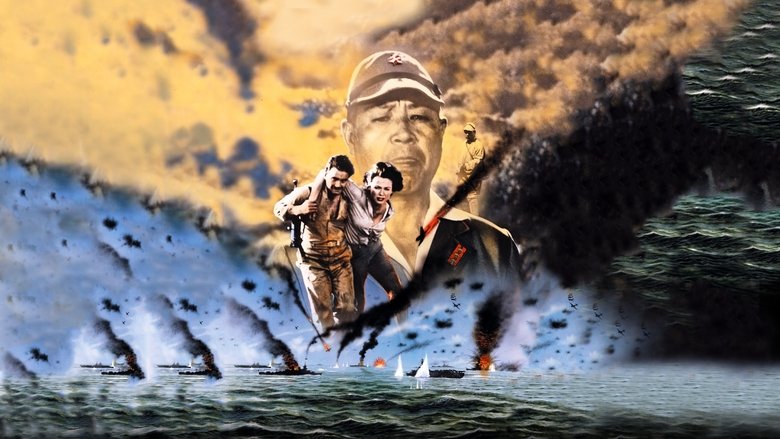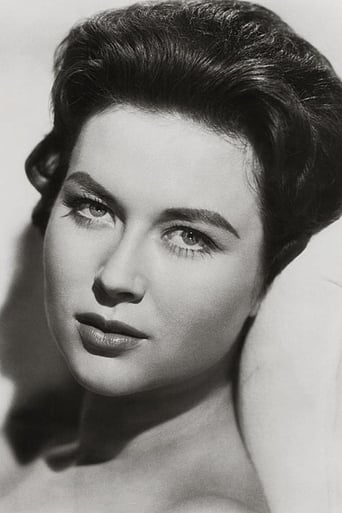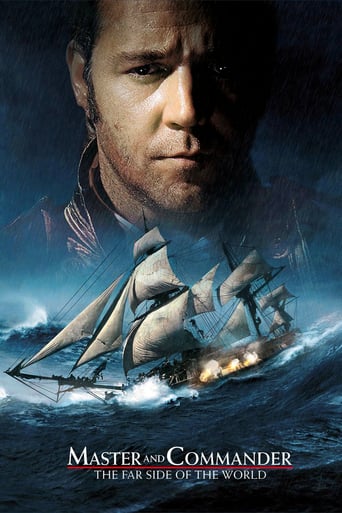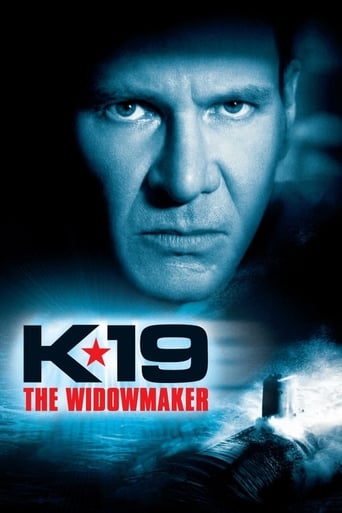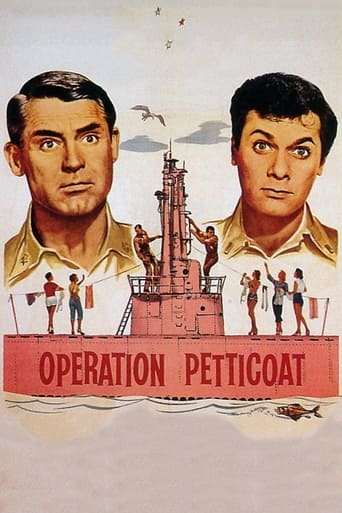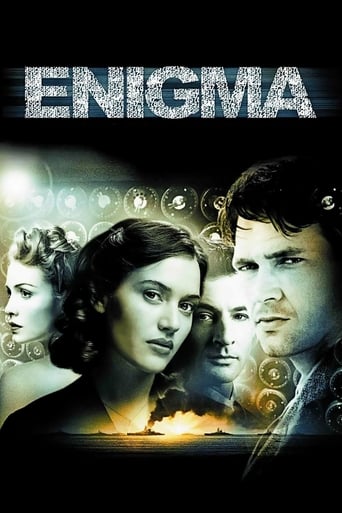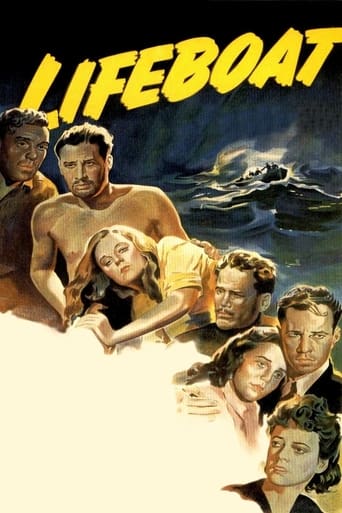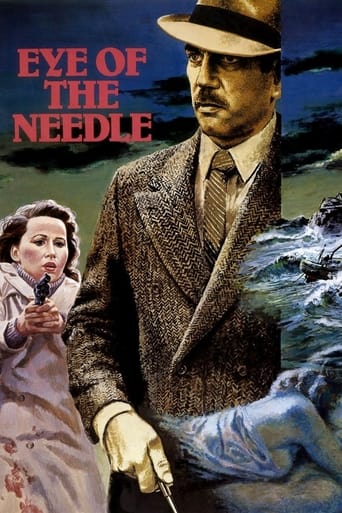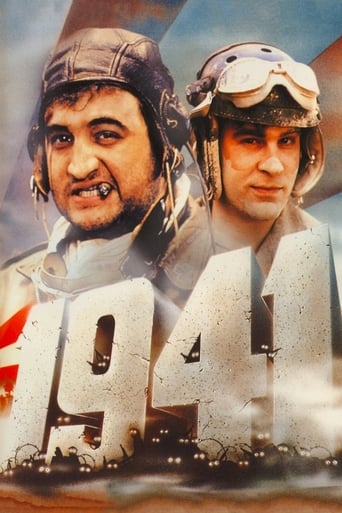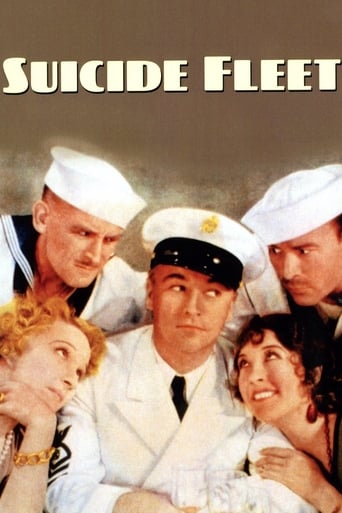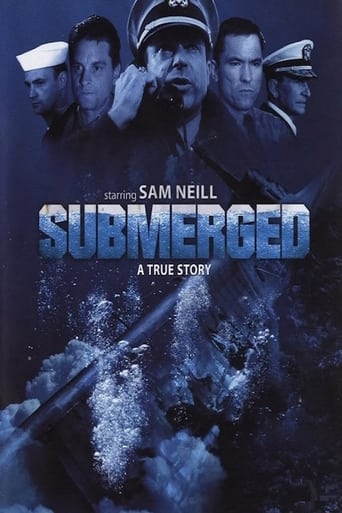Battle of the Coral Sea (1959)
A US submarine and its crew are captured by the Japanese on the eve of a major WWII battle.
Watch Trailer
Cast


Similar titles
Reviews
This is a particularly ridiculous film in just about every way. If you can overlook the utterly weak swiss cheese of a story, the astonishing incompetence of the captain and all of the Japanese, the notion of a woman POW in a men's prison camp, the inability of two dozen Japanese ships to spot a periscope, the unawareness of the Navy that a sub is not a ship but a boat, and that the battle the film is supposed to be about doesn't happen until eighty minutes in, it provides passable entertainment.
Just in case you're wondering Battle Of The Coral Sea has absolutely nothing to do with the Pacific Allies engaging the Japanese Fleet from May 4 to 8, 1942. The title should not lead you to expect to get a film like The Longest Day or Midway which are factual docudramas about those battles. The Coral Sea battle does deserve such a film and maybe an American or Australian film maker will do such a film some day. This ain't it.This is instead about Cliff Robertson and his submarine sent on a scouting expedition to find out Japanese intentions. They do find out, but the submarine is destroyed and Robertson and his crew are taken prisoner. After that the film plot line is one of escape as Robertson, his surviving crew members and some Aussie prisoners are also looking to break out. Along for the ride is Gia Scala daughter of a French plantation owner who is Japanese speaking and serves as interpreter. She's surviving the best she can by coyly alleging Vichy sympathies.What Robertson might have been doing is anyone's guess because we knew of Japanese intentions having broken the Japanese code. So the film is false on the face of it. Add to that Robertson's rather unbelievable escape, similar to Errol Flynn and his crew in Desperate Journey. Hopefully one day we'll get the real story of the Coral Sea. Demand it rather than this be the film that purportedly tells it.
Maybe there should be a genre called "situation drama". The 50s was the era of the double feature. Often there was a main feature with what was called a supporting feature. Often independently produced, they were films made to a price and sold outright to a studio. There were a load of "westerns" which were made restricted to a tiny and mainly ethical plot as opposed to the non-stop action of the so-called juvenile westerns. They were largely shot in the studio and on a tired town set on the back lot. Outdoor dialog scenes were shot on clever but artificial sets. Action could be shot MOS. Even if made in cinemascope they were shot B&W. A "name", usually a faded second line star from the late Golden Age would be employed and then a few actors and pretty women to set him off, then some anonymous background people. These would populate a space but were limited in numbers. The secret of these films is the scheduling. Crowd all the crowd scenes would be shot in one or two days. Supporting actors would have their scenes shot in two or three days. Most of the scenes are contrived to be dialog, two shot, three shot, and four shot set-ups. Most of the time the town seems to be inhabited solely by the principal players. The leading actor would get a handsome but not astronomical salary. I remember working for a producer in 1980 and discovering the prices for some of the actors- it was possible to hire the likes of Chuck Heston or Bob Mitchum for $400,000 and virtually any actress in the world except for a dozen stars for $4,000 a week. That was in 1980 (in any case this was way out of the ballpark for my producer). Never the less, most of the pictures weren't all that terrible, at least at first. Late, when the formula became known, everyone and anyone could turn out films like sausages I believe is the cliché. Some of the later ones are merely perfunctory. At their best they were training grounds for new talents and a place to revisit the heroes of the recent past. Its also a world where one becomes aware that the casting for name recognition meant that a producer who didn't see the innate dignity and urbanity of, say, Dana Andrews, would think it would be a good idea that, well, he's a good looking guy, we'll put him in a western.What does this have to do with a film called THE BATTLE OF THE CORAL SEA? First of all, the title is misleading, as Peter Griffin said when he was being escorted from the poop deck. Forget the prequel to Midway tag. It's a war picture but the sub-genre isn't navel warfare, but rather a POW picture. The only things representing the battle are the bookends, stock footage (some anachronistic) of navel warfare kind of stuff. The set-up: Cliff Robertson is a sub commander sent out on a recon mission before the aforementioned battle with the strong suggestion that if he has to sacrifice his boat, his men, and himself he must not reveal the dingus, the rendezvous point. Emphasis. So of course that's just what happens. Japanese Navy frogmen in post war scuba (!) gear attach mines to the sub and Robertson gives up after scuttling the boat. That's the first half hour.So Robertson and some character actors are separated from the crew who were never so numerous anyway. They are taken to Club Med, I mean the Japanese POW camp. This film was made at the beginning of the "rehabilitate Japan period". The men are forcibly put to work walking on a wheel to dredge up the drinking water for the camp. This is no Bataan Death March. But for no more than one hour at a time. There are people in my neighborhood who pay several hundred dollars a month to do that. There is a knockout blond Australian nurse who lives with them and a dark woman, daughter of a planter, who may be either French or Italian but claims to be "neutral". The POWs have more room for fewer people than even Hogan. The Japanese commandant makes several strong requests to Robertson to reveal what he knows but he refuses. All they have to do is survive 3 days (that's when they're supposed to rendezvous. The dingus again. Time, like the studio sets, is compressed and confined. The commandant fails and either he's going to be replaced or Robertson is going to be taken away to be interrogated to death or both. So they escape and some of them get killed and the rest get back home safely and the Battle is fought and we win. The end. (BTW- the secret ID code is Fancy Free, which was the name of the wartime ballet about three sailors on leave in New York that was developed into ON THE TOWN)It was an important battle, but not the greatest sea battle in history. I think maybe Jutland or Port Arthur were both larger. It was the first sea battle fought between aircraft carriers and where the opponents never saw each other. It was usually accounted a tie but important as a step in turning the war back to Japan but really just a curtain raiser to the epochal Battle of Midway.THE BATTLE OF THE CORAL SEA is merely another time passer, somewhere between a real movie and TV. The only scene that I remember from seeing this film as a kid was the one where the American Sgt., played by a frequent face on TV, wins a wrestling match but is shot in the back by his defeated opponent. But during those long double features it was good to have a picture where one could leave to go to the bathroom or buy popcorn without missing much that was going on.
The Japanese lost the 11,000 ton light-carrier Shoho, while the Americans lost the much more valuable Lexington. In addition, each-side had a top-notch CV (Shokaku and Yorktown) damaged. The Japanese had a 3rd carrier, Zuikaku, which was undamaged during the battle. Based on that, the Japanese won the battle, however, their air group was punished heavily. Their carriers were assigned to support the invasion of Port Moresby, and they had suffered a lot of plane losses so that they no longer felt confident they could do this. So, this swings it to an overall draw.In the end, it would be the Japanese who were hurting more, because the Americans not only had a lot more pilots in reserve, and thus could replace losses more easily, at this point in the war the Japanese Navy had the more experienced pilots. So, losing pilots hurt them more than it hurt the USA. Also, it took nearly 2 months to sail Shokaku back to Japan and repair her, but Yorktown headed for Pearl Harbor and was patched-up and ready for battle (although not fully repaired) in 3 days.Incidentally, their plane/pilot losses were so heavy that Zuikaku sat out the battle of Midway waiting for replacement pilots. This was a huge mistake since the 5th flight deck would have been invaluable.


